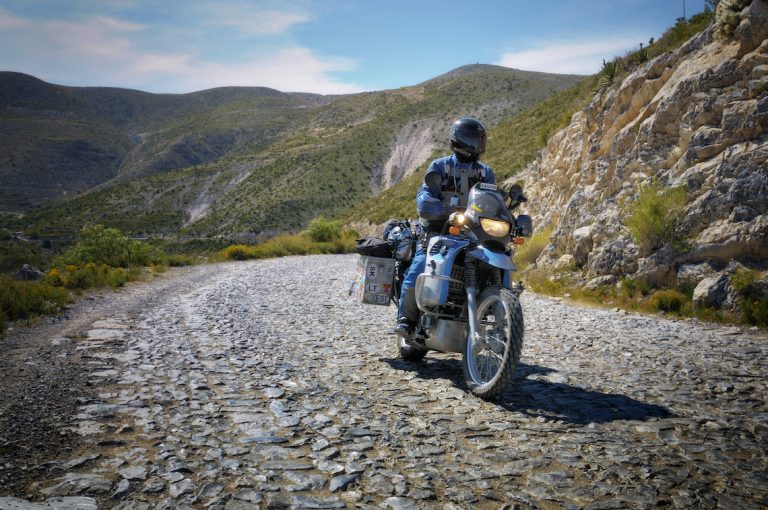After you cross the fiercely guarded border and escape the bustling cities, Mexico offers a motorcycling experience like no other, Simon Thomas discovers more
Through the border town of Laredo, we’d caught a few glances from the bandanna-wearing locals, who’d momentarily dropped their gangster stare and smiled with upward nods of approval. We’d finally squeezed the brakes just two feet from one of the most fiercely guarded borders in the world.
Sat on our bikes in full gear and without shade, we’re being roasted like a pair of boil in the bag chickens. My mouth tastes like sweat and road dirt.
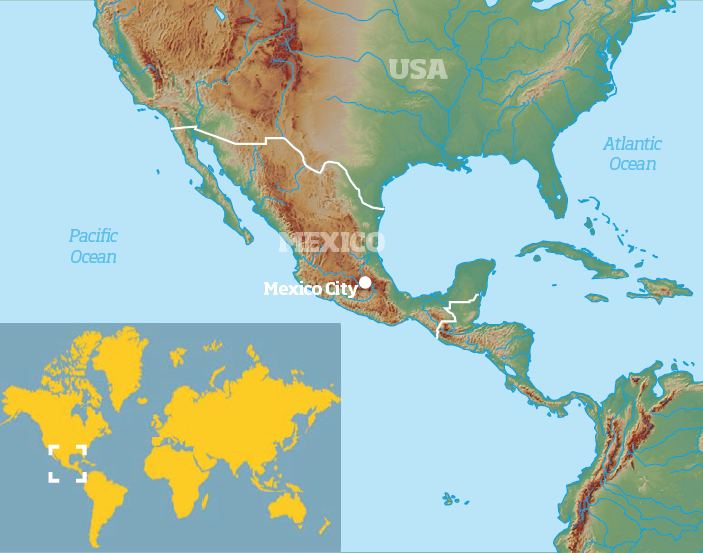
‘Where ya’ll heading?’ Asked the colossal gun-toting Texan agent, as we showed our passports for the final time. I’d wanted to answer, ‘Err, Mexico,’ but thought it best to bite my tongue. ‘We’re heading down to the Yucatan officer’, I answered politely doing my best Hugh Grant impression. Lisa was feeling less polite. Through our helmet installed comms system she’d whispered in my ear, ‘Jesus, he sounds like John Wayne, look at the size of this guy, I think he ate John Wayne!’
‘Ya’ll take care, there’s a trouble over there.’
‘Really, where exactly?’ I asked, feeling suddenly more concerned than I had been. ‘Son, that whole place got danger! Let me tell ya’ll, I’ve been stood on this border for 25-years and I ain’t never put a foot in that country!’ Our stern friend stated with a degree of pride that seemed misplaced.
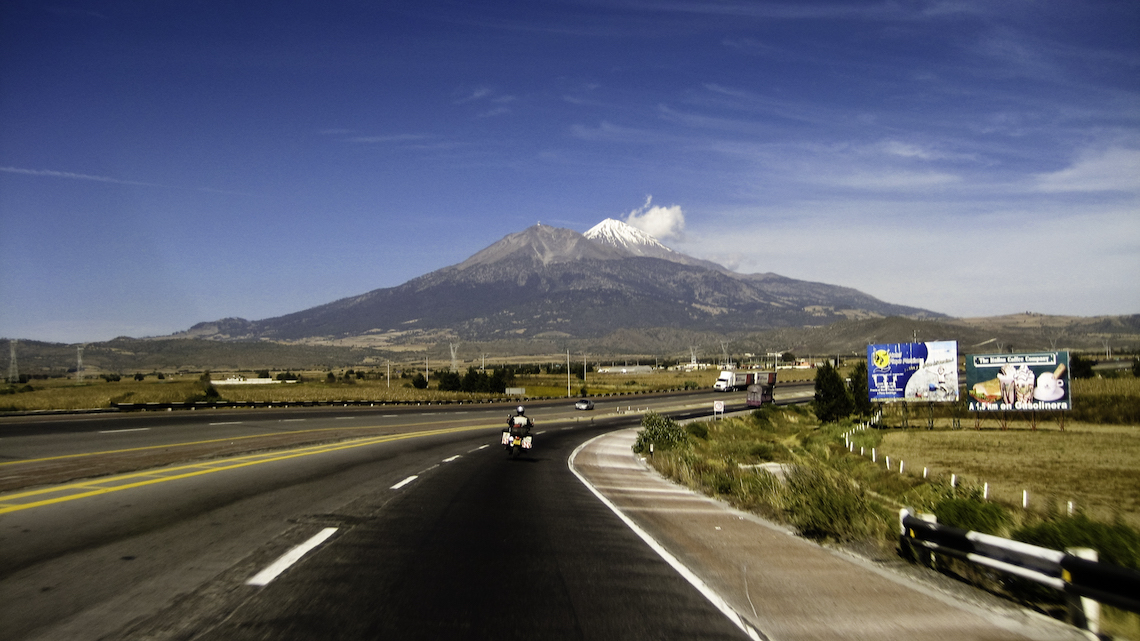
With that, he returned our paperwork, snorted and waved us on our way to what he presumed was to be our certain death.
Mexico had been pulling at our imaginations since we started planning our ride-around-the-world, some 15 years ago. From its ancient citadels and colonial palaces to its cactus littered deserts and its steamy tropical southern jungles, modern Mexico offers a wild ride. All we had to do was twist the throttle and push past the media façade of donkey shows, cocaine, kidnapping and cartels.
A fast push south had quickly dried our sweat-soaked riding suits. Lisa had set the pace early, her single-cylinder F650GS belting out a contented rhythm that sounded more like a Gatling gun than a BMW. God her bike’s loud!
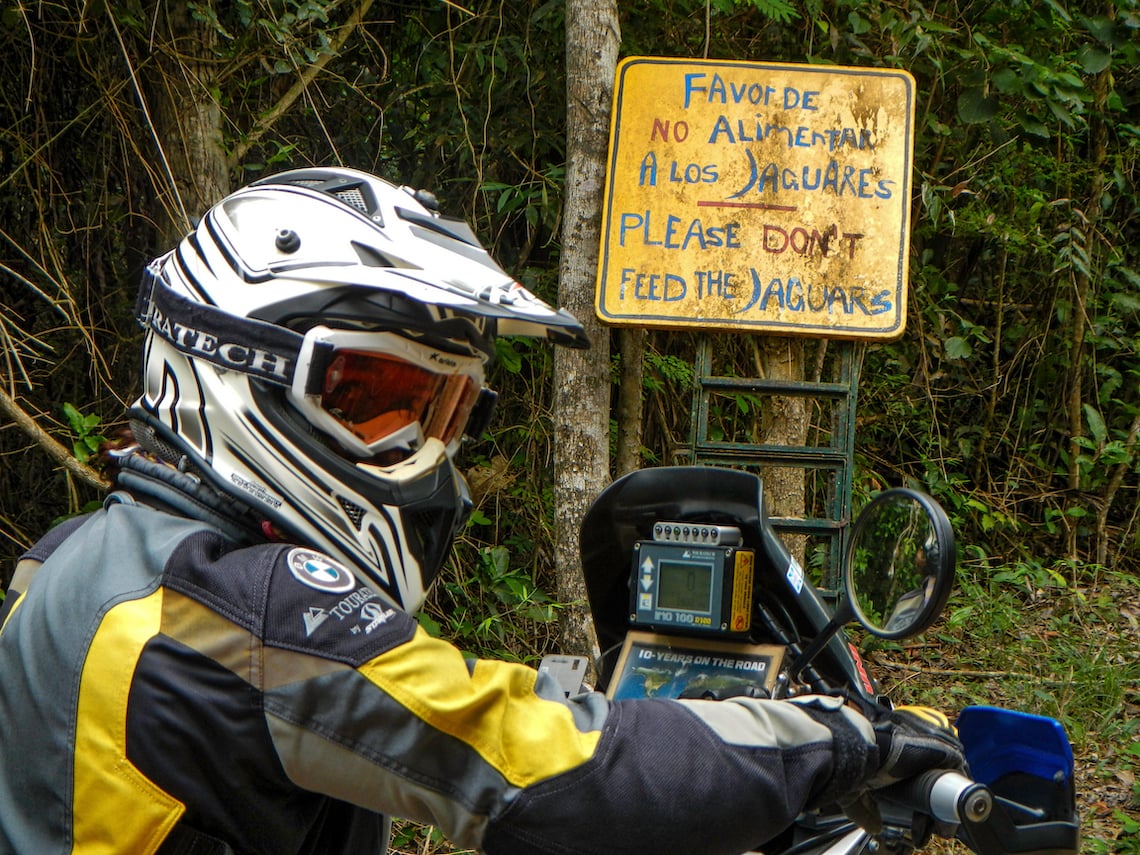
In the northern state of Nuevo León, we ride around the fringe of Monterrey City, Mexico’s second-wealthiest metropolis and begin to acclimatise to a different set of rules. We skirt around an odd mix of gleaming Mercedes and fuel belching wrecks, the traffic waiting impatiently for meandering livestock to cross the main road. The little boy in me, that grew up with cartoons of Speedy Gonzales, half expects to see sleepy Mexicans in white pyjamas, resting against walls, each huddled under huge sombreros.
Not a chance, they’re long gone, replaced by a littering of concrete shacks, tired corner stores, McDonald’s and graffiti sprayed cinder block walls. Dusty street dogs launch themselves from the roadside, snapping their teeth at the passing car tyres in the hopes of an ambitious kill. Closer to the city centre modern gated communities rub shoulders with gleaming malls, whose mostly empty car parks stretch out of site. In the distance, the impressive profile of Cerro de La Silla (Saddle Hill Mountain) looms high over the city.
We’ll ride on; we’re still in search of something a little more…Mexican.
Perched at almost 3,000 metres, amidst one of Mexico’s highest plateaus, life is being blown back into the one-time ghost town of Real de Catorce (Royal Fourteen). This place feels more like a Mexican Shangri-La and the route to ‘Real’ just adds to its growing myth.
Yesterday we’d detoured from Highway 62 onto an unmarked narrow cobblestone road, which snaked its way up and across the mountainside for 17 miles before delivering us to a narrow tunnel entrance, right out of Tolkien’s middle earth. Dug by hand back in the early 1900’s the Ogarrio tunnel leads us through the inky heart of the mountain. The weeping walls, polluted air and murky darkness last for an ominous 1.5 miles before spitting us out into the bright light and steep streets of this hidden mountain village. Wonderfully the tunnel offers the only entrance and exit from this eagle’s nest.
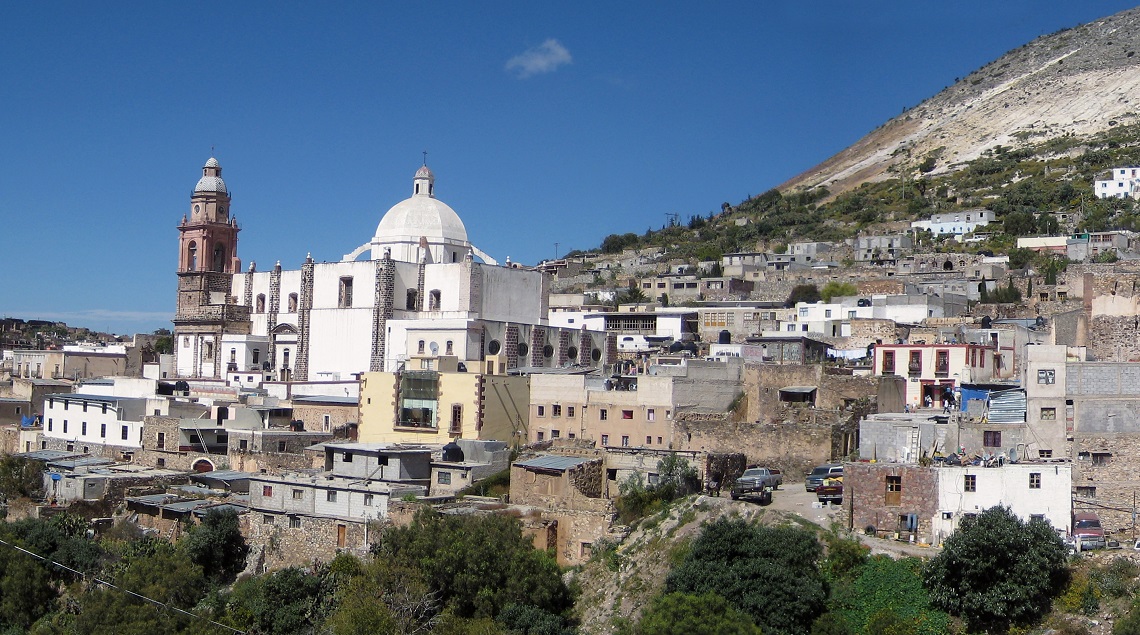
Outside a small bar, the cold bottles of Corona Extra Lisa and I sip on cut through the grit of the arid air up here. Once home to 15,000 silver seeking miners, Real today is an undiscovered gem, a soulful blend of steep cobblestoned streets and boutique eateries that cosy up with abandoned buildings, where the wooden shutters still creek in the breeze. Outside the El Real restaurant, locals whisper offers of ‘Peyote’, an ancient hallucinogen whipped up from cactus. From the stone ramparts of our small hotel, we watch the dusk draw in, below us the State of San Luis Potosi stretches out and meets the night.
Two days later and back in Mexico’s lowlands the rhythmic hum from the motor of the R1150GSA has me hypnotised as we flick through the gears. By late afternoon we’re swapping the farmed mountain terraces of Potosi State for the humid and green ravines and gullies of Zacatecas State, before reaching the cooler western shoreline of Nayarit State.
In second gear and with the sun disappearing we negotiate the pot-holed streets of San Blas fishing village. Lonely Planet had described it as a ‘peaceful, drowsy backwater’. Through the narrow streets, small children had cheered and waved as we passed. Led by our GPS, we finally stopped inside the painted courtyard of the Roxanne Apartments.
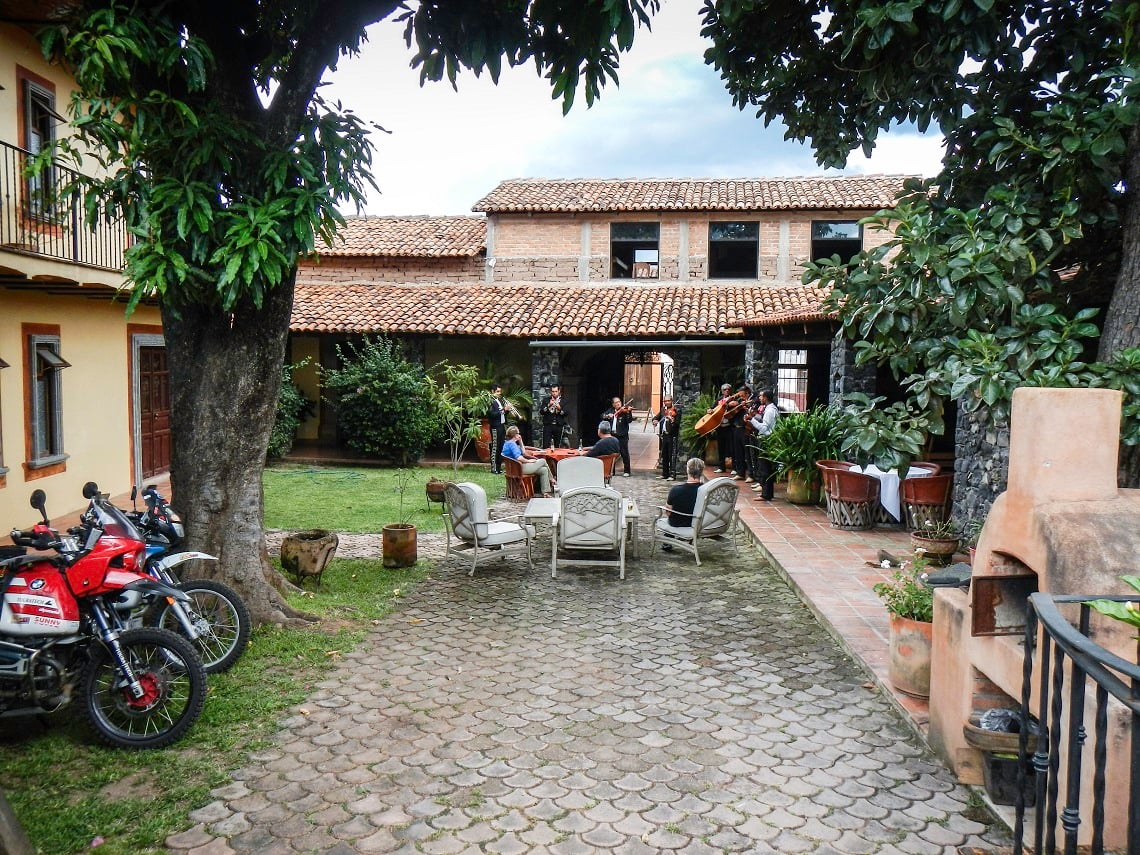
As we pull ourselves from our bikes, we’re brushed by a cool Pacific Ocean breeze. Thirty minutes later our bikes are locked, our bags stowed and our waiter grunts ‘dígame?’ which literally translate to ‘tell me.’ Two glasses of Tequila we’d not ordered are plonked down in front of us. Our pescado tatemado (grilled mullet) meals are thrown onto the rough-hewn wooden table seconds later. The meaty fish cooked over an open fire of mangler wood and covered in lime juice smells delicious. As we tuck in, a group of young boys intrigued by our riding suits all edge closer, eager to ask a barrage of questions.
Down on the sandy beach, silhouetted fishermen pull their wooden boats to the water, wind up nets in their arms and set out into the ocean in search of a nighttime catch. On the beach a lone vaquero (Mexican cowboy) sits astride his horse, with two more in tow, his day is done. No one is renting horse rides tonight.
By 8 am the following morning, San Blas’s historic village square is buzzing as the market comes to life. At a local Taqueria, we bite into a breakfast of artery thickening fried pork and eggs loaded into a soft corn tortilla. Behind us, the whitewash paint cracks and peels from the ancient bell tower as worshipers cross themselves before entering for morning prayer. Riding out of town we pass a dozen brightly painted signs each offering tropical riverboat rides into the jungle and nearby mangrove.
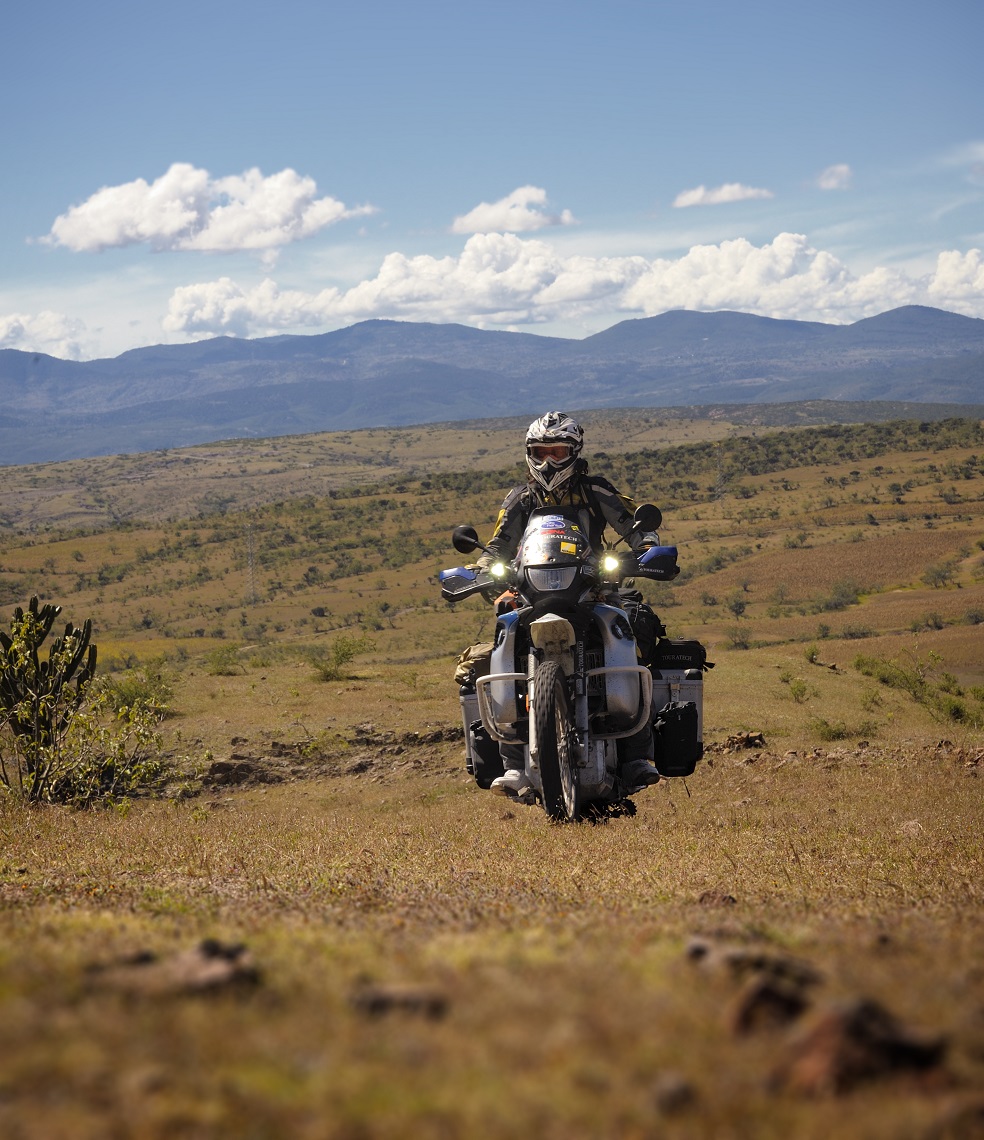
Seventy miles south of San Blas, between the boutique hotels and cosmopolitan eateries, we snatch glimpses of sparkling blue ocean as we round the Bahía de Banderas (Bay of Flags). Vallarta’s out of our budget, besides, the Sierra Madres mountain range will be home for tonight. The winding 544 pulls us easily east and into one of Mexico’s most famous states.
Jalisco State is considered the birthplace of much of what is considered stereotypically Mexican. Mariachi (Mexican folk music), Birria (spicy meat stew) Tequila (yeah, you know what that is!) all claim Jalisco as their birthplace.
With better fuel found in Vallarta, both the bikes feel strong and responsive as we tap into a lower gear and pull around the slower traffic heading east for higher and cooler climes in the Sierra Madre Occidental mountain range. The range is as stunning as it is vast. Winding ever upwards through another deep gorge the steep rock banks amplify the roar of our engines. Our ascension has been giddying. We’ve climbed almost 2,000 metres in just 27 miles. The earlier palm trees have been replaced by dense forests of cedar and oak. Large modern signs read ‘área de nieve’ (área of snow).
We arrive in the quiet and colonial Mascota town exhausted but exhilarated from our ride. Mascota’s situation is picture-perfect, nestled at the end of a long green valley between the shore of the Mascota River and the Chivato hill.
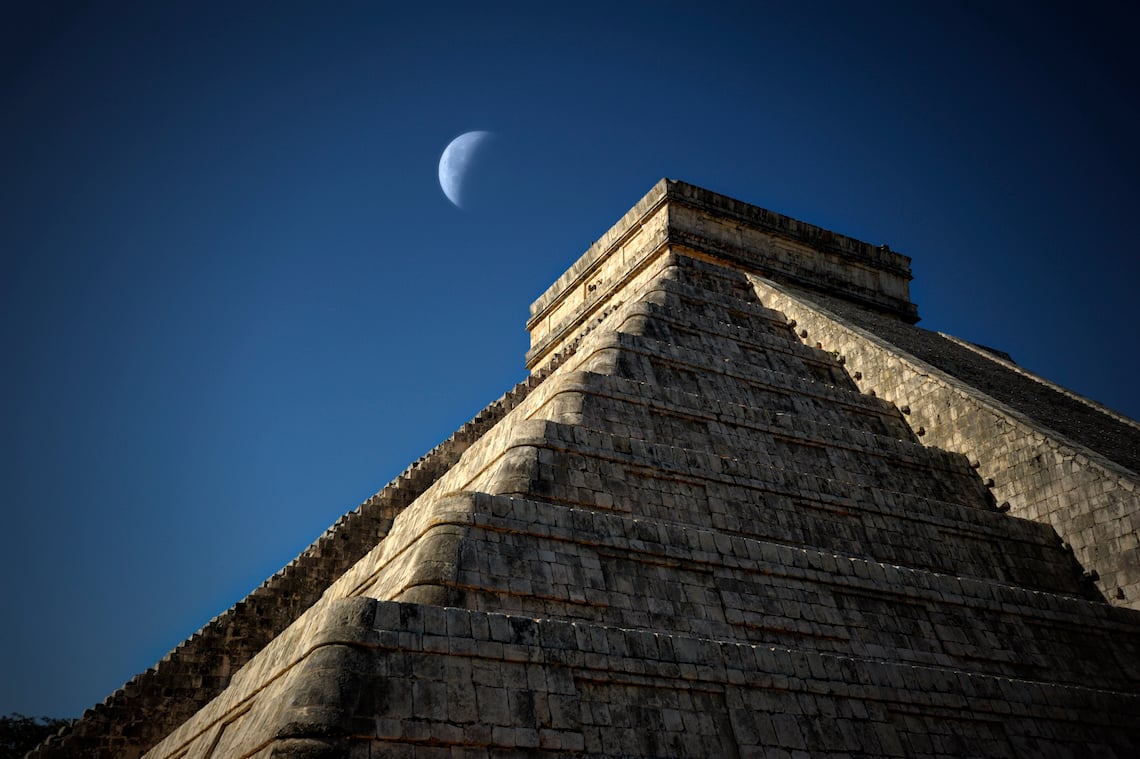
Come straight through, yells Maria as we ride up the tall stone curb from the street and through a low ochre painted lobby before emerging into a grand terraced courtyard of the main villa. We park the bikes between a stout buttress tree and a stone stairway that leads to our room. At £16 a night the Santa Lucia Hotel is pricey by our standards, but from the brown leather colonial-styled armchairs to the small metal railings and the terraced private rooms, the hotel yells luxury.
Back in the main courtyard, we fall into comfortable recliners and easy conversation with Julio Cabrara and his Canadian wife Maria. Julio is a singer of international note, blind from birth. His hotel is named after Santa Lucia, the patron saint of the blind. Maria offers us a locally produced Tequila from a huge barrel and explains that the distiller is a fan of Julio’s and prepares the barrel especially for him. Before we can answer the Tequilas are poured. Unbeknownst to us, it’s Julio’s birthday. The villa was actually closed but Julio had enjoyed the sound of the bikes and invited us in.
The only way to access Real de Catorce is through the 1.5-mile long Ogarrio Tunnel.
–
The pass was built entirely by hand in the early 1900s when Real de Catorce was a thriving silver mining settlement.
–
It is only wide enough for one vehicle which means you have to wait your turn or face having to reverse all the way back to the entrance.
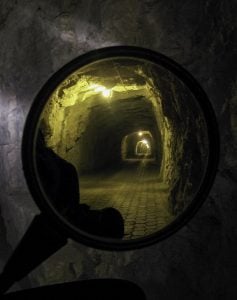
Six special tequilas later and the six-piece mariachi band, reputedly the oldest in Jalisco state are in full flow and Julio’s melodic and gentle voice fills the courtyard.
Dressed in an impeccable black and gold embroidered suit, with a white shirt and a blood-red scarf, the oldest of the group strums a guitar twice his size.
Lisa shoots me a smile that confirms her thoughts mirror mine, ‘how cool is this!’ The afternoon melted away along with whatever plans we’d had for the evening. Inside our room, the dull warm glow from the sidelights illuminate the brick walls.
Underfoot the terracotta tiles feel worn and smooth. We’re going to sleep like royalty tonight.
We while away an hour the next day meandering around colonial Mascota, sipping coffee in a snazzy coffee shop before grabbing a handful of photos of the main church and stony streets. It’s easy to see why Vallarta’s well-to-do weekend up here to escape the heat of the coast.
Like riding a giant rollercoaster, we snake our way over jungle-covered mountains and plummet into deep valleys. We’re pushing east over the Sierra Madre mountain range. Ahead of us, the land of the Mesoamerican’s stretches out, where ancient societies built impossible cities with unexplained technology.
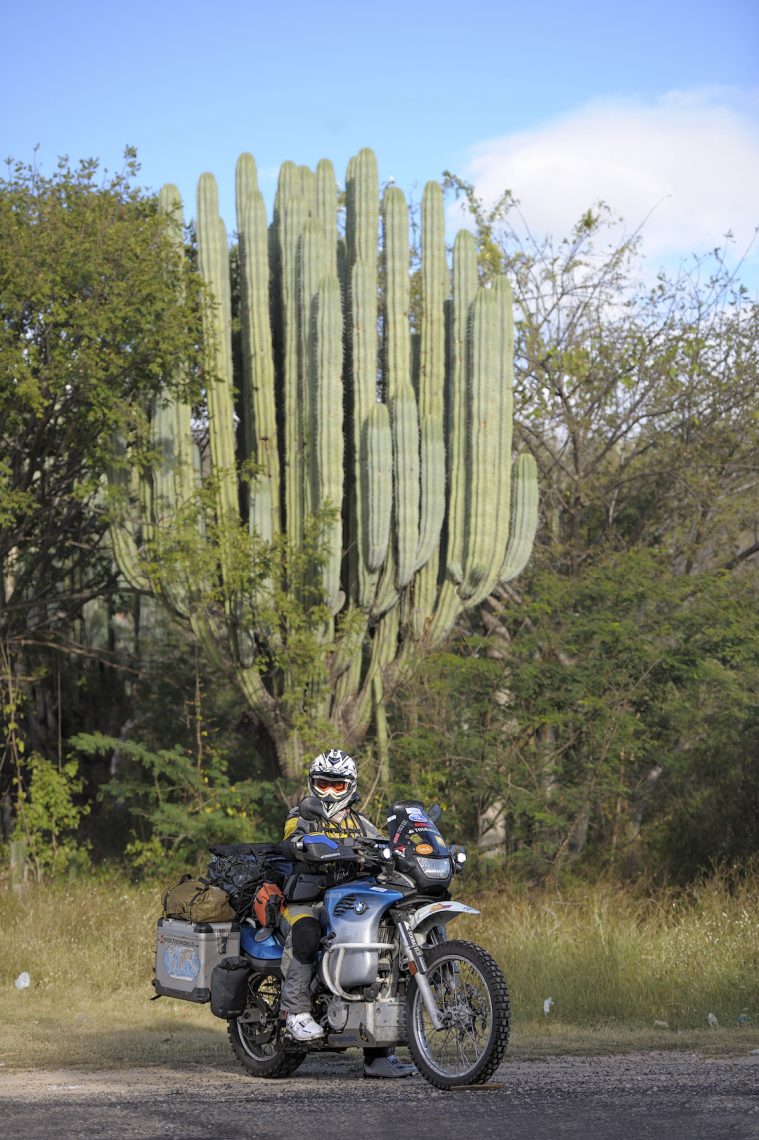
466 miles of winding tar leads us through tropical jungle and valleys of cactus, through mountain streams and forgotten pueblos, past rivers and into roadside café’s. With the bikes parked close, the new plastic chair buckles slightly as I plonk my- self down. Under the shade of a tin roof, we flick through the sun-bleached menu. The bright red Coca-Cola table is briskly wiped before our lunch is laid out. Two pieces of pounded flattened beef with chips and a blood-red chilli sauce to spice things up. It should have come with a danger warning. Luckily Lisa has an asbestos mouth!
By late afternoon we’ve changed pace and are skirting the northern edge of the megalopolis that is Mexico City. Over 20 million call this city home and right now I think every one of them is on the road. A minuscule 30 miles northeast of Mexico City our world has changed, calmed and with the bikes parked we pitch our tent on a grassy patch. Our nighttime feast is courtesy of a small local restaurant, which serves us cold beer and an endless serving of beef tacos for £2 each.
It’s mid-day and in the building heat it’s taken us 20 minutes to walk up here. ‘How the hell did they build this?’ Lisa splutters from atop the worlds third-largest pyramid. The Temple Of The Sun is over 70 metres high and 22 metres long on each side. Without metal tools, the power of livestock or the wheel, scholars still argue as to how this giant was constructed. Part of me loves the fact that in today’s high-tech, instant online answer world, there are still a few mysteries left. This ruin was one of the first great cities of the western hemisphere and from up here, the view is inspiring. Down below us the Avenue Of The Dead stretches out and disappears in the sun haze.
Three days later and we’ve ridden across Mexico State, Puebla, Oaxaca, Veracruz, Tabasco, Campeche and finally pull to a stop in the southeastern state of the Yucatan. For all its incredible size and mystery, Teotihuacán is mere foreplay for largest and best-known Mayan temple complex in the world. On the bikes and with our hands in the air we are poised for the mandatory photo op and above us the huge stone sign reads Chichen Itza.
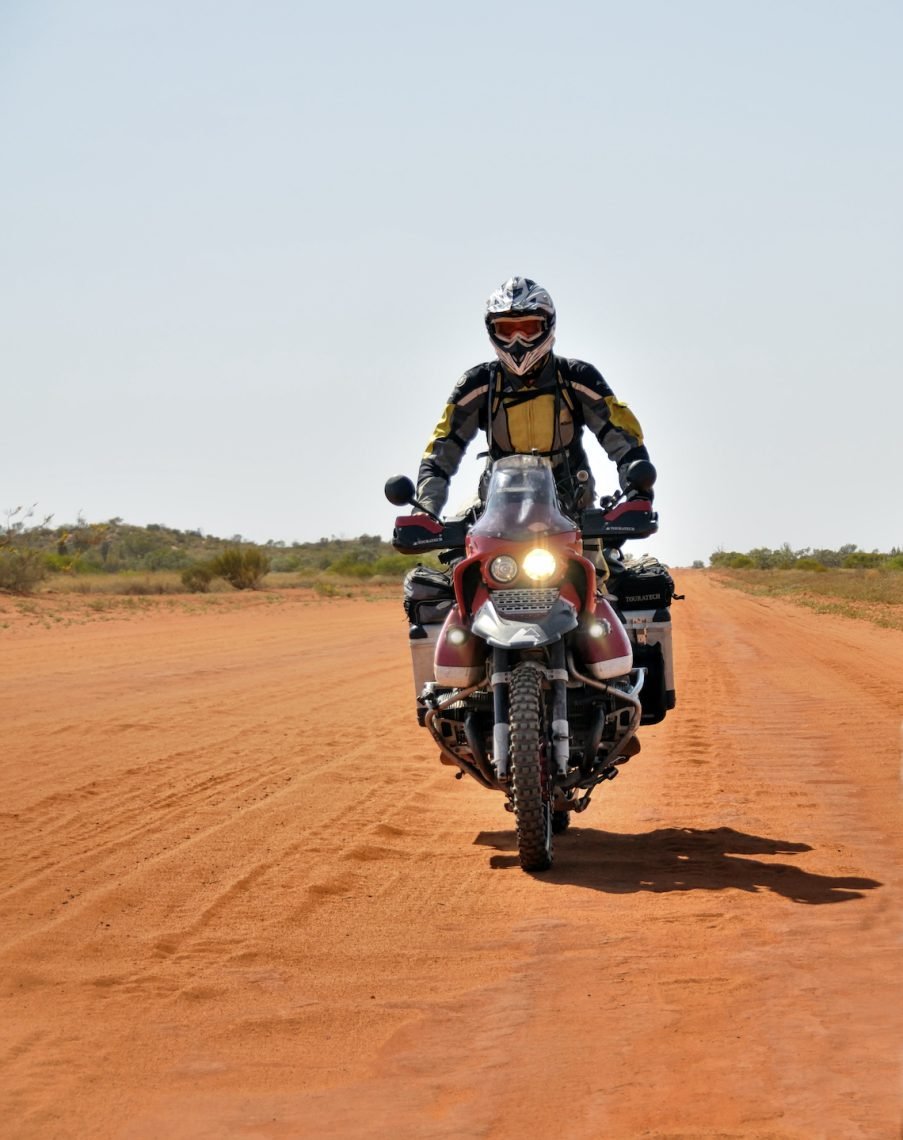
It’s just gone 6:30 am as we walk a well-trodden track leading us from the main gated entrance through a dense patch of jungle. Squat trees provide a low canopy. The day’s humidity is already building, so is our anticipation. Without warning the treeline stops abruptly to reveal a wide grassy vista, in its centre and rising dramatically is the most photographed Mayan temple in the world; El Castillo to give it its proper name. There’s no clever words, we just take a few seconds to absorb the moment, the view, the history and the fact that we rode our bikes here. A silent smile smears its way across our faces.
At the base of this immense stone structure, El Castillos true size can really be felt. Work started on this insane construction in AD800. Staircases rise steeply on all sides, each with a vast carved stone serpents head at its base. 25 metres above our heads the temple is topped by a sacred sacrifice room, where Toltec warriors, carved into the doorways, protect the dark interior. We’ve spent the day bumping shoulders with the other gawpers and snap-happy tourists.
The ritual ball-game courts, decorated palaces and intricately carved architecture has left us speechless. As we leave the complex we take one last look over our shoulders, the long shadow of the El Castillo temple seems to reach out across the grass towards us. We’ll be back one day. Exhausted and with every camera memory card full we ride the short 1.8 miles wearily back to the Pyramid Inn.
Our weapons of choice: two very modified BMWs. I’m (Simon) riding what started as an R1150GSA and Lisa’s on an F650GS. Although to be fair, Lisa’s bike sounds more like a Gatling gun than a motorbike!
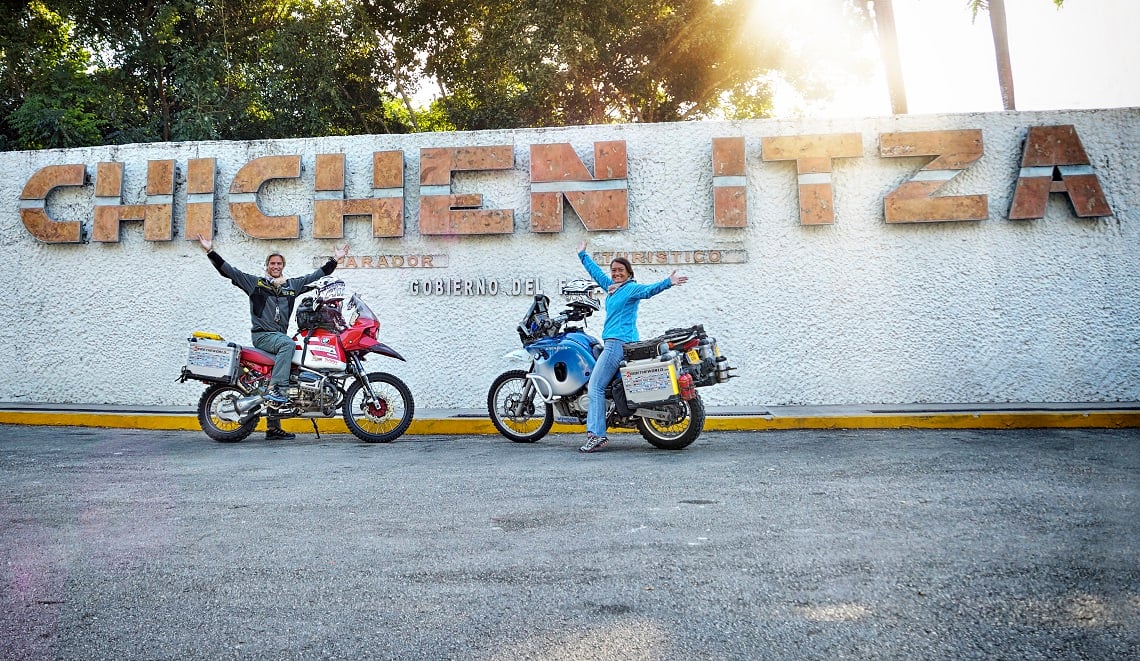
Two days on from our Chichen Itza experience, a lunchtime detour into the egg-yolk yellow-painted town of Izamal provides a welcome break from the comatose inducing straightness of the main road. In the shadow of the central convent in a small café with just two tables, we devour a local speciality of cochinita pibil, a glorious concoction of marinated pork roasted in banana leaves. Back on the road and even our swift pace does little to lessen the growing humidity as we cross from the Yucatan and into the Caribbean state of Quintana Roo.
North of Tulum and south of the tourist playground that is Playa Del Carmen, we slip from the main road and onto a narrow dirt track. Mangroves line the sandy-rocky trail before we reach an oasis of tall palm trees and deep sand. With our helmets propped onto the handlebars and our sweat-soaked MX boots lent against the bikes, we lay our riding jackets under our side-stands to stop our bikes sinking into the whitest sand either of us has ever seen.
Walking up the low soft dune takes the last of our waning energy before we reach the top and enjoy the slow stroll down to the turquoise-blue warm waters of the Caribbean Sea. It’s easy to say we’ve fallen under Mexico’s spell. The gently curving bay of Xpu-Ha beach is as close to perfect as we can imagine. We’ll camp here for a few weeks and soak up as much of this as we can.
‘Right…pass me a cold beer!’
Want to do what Simon and Lisa did? Here’s how you can…
How long to take off work
Simon and Lisa have been on the road for 12 years now, but unfortunately, not all of us have that time. Factoring in travel times, we recommend allowing at least two weeks to make the most of it.
How to get there
Direct flights from London to Mexico City cost around £700 while heading to Cancun will set you back around £500. Fares can be found cheaper if you don’t mind making a stop along the way or being flexible with dates, so check www.skyscanner.net for the best prices. From here you can venture to many of the places mentioned by Simon and Lisa.
To ride your own motorcycle in Mexico, it is recommended that you send it into Los Angeles or Houston before riding across the Mexican border. James Cargo Motorcycle Shipping can transport a BMW R1200GS sized motorcycle, to arrive into either Los Angeles or Houston, for £1095 by airfreight or £795 by ocean.
Check www.jamescargo.com/motorcycle_transportation for more information.
Accommodation
Mid-range accommodation can be had for around £20 per night for a double room, however, if you don’t mind being without your creature comforts it can become much cheaper.
When to go
December to April offer the driest (and best) months over most of Mexico and can get quite busy with tourists and locals celebrating Christmas and Easter. The shoulder months of July and August offer hot temperatures, wet weather on the Pacific Coast and many more tourists.
Is it safe?
Mexico has its fair share of problems and thuggery, but then again that’s true of most countries today. Could you find yourself in the wrong place at the wrong time? Sure, but no more so than any other place. The chances of you riding into a ‘Cartel controlled area’ where drugs are produced is pretty slim as you’ll be redirected by local police, federal law enforcement, military and locals long before you get anywhere near. Travelling safely in Mexico is about using common sense. Don’t flash your cash, don’t leave gear unguarded and don’t get involved in the drug scene. If you think there’s local dodgy activity, make yourself scarce and move on.

